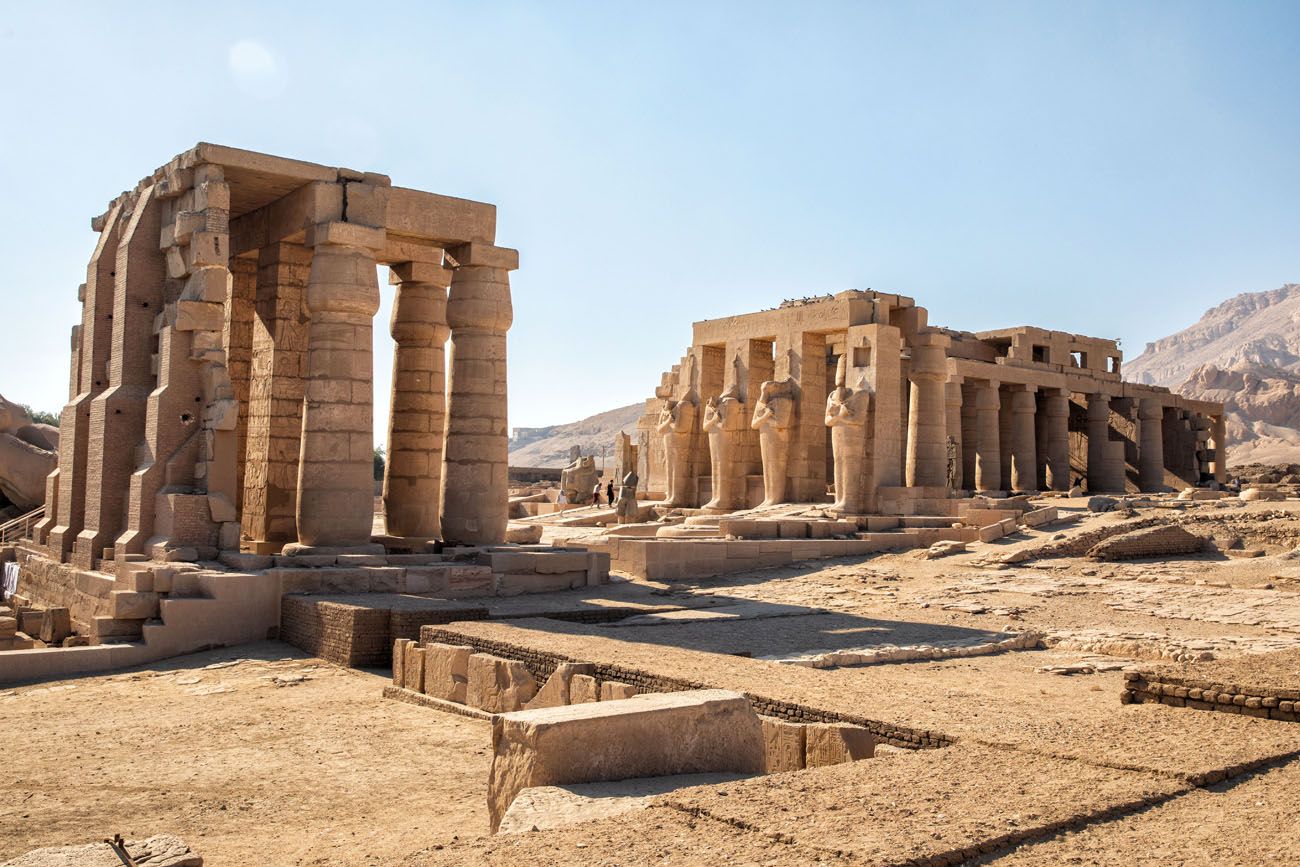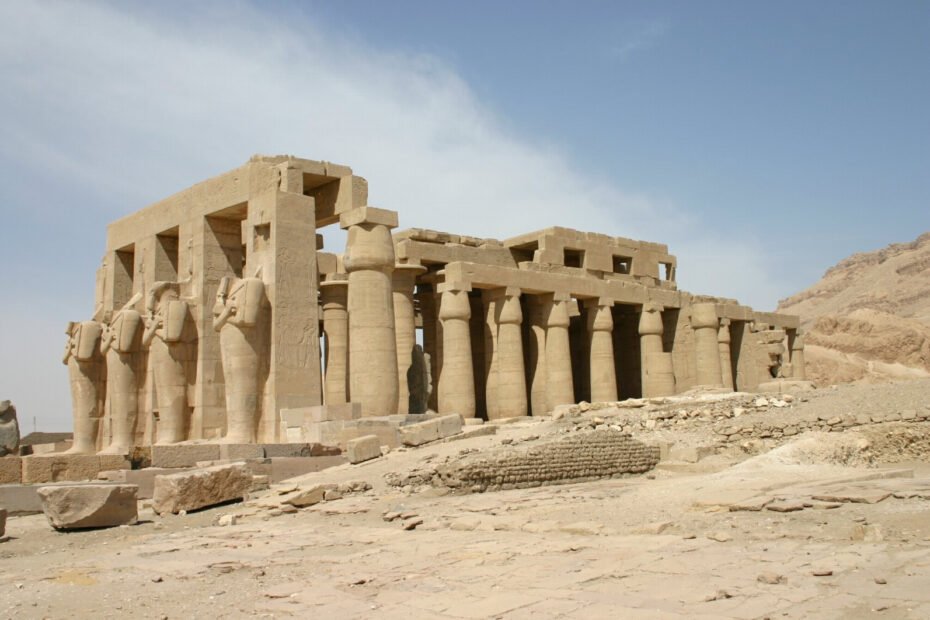Scattered with broken statues and ruins, founded in the 13th century BC, the Ramessum is a mortuary temple of Pharaoh Ramesses II. It is located in the Theban Necropolis in Upper Egypt, on the west of the bank of River Nile, across from the city of Luxor in Upper Egypt.

The Story Behind Multiple Names
Ramessum has had multiple names over the years. Each one has a different reason. The prenomen(or the throne name) of Ramesses II was Usermaatra-setepenra. So, it was called the House of millions of years of Usermaatra-setepenra. This temple is also known as the ‘Tomb of Ozymandias‘ or ‘Palace of Memnon‘, as described by the Greek historian Diodorus Siculus in the 1st century BC.
Jean-François Champollion was a French philologist and orientalist who deciphered the Egyptian hieroglyphs. He visited the ruins of the site in 1829 and first identified the hieroglyphs making up Ramesses’ names and titles on the walls. He coined this French name Rhamesséion and that became another name for Ramessum.
History of Ramesseum

Ramesses constructed and modified a lot of tombs and buildings. He built this funerary temple with a motive to safeguard his memory and glory even after his death. He constructed it by following New Kingdom royal burial practices. Thus, the monument would act as a place of worship dedicated to the pharaoh. Recent excavations indicate that work on the project began shortly after the beginning of his reign and continued for 20 years.
As per the customs, the scenes commemorating the pharaoh’s military victories attract one’s eye on pylons and outer walls. The Ramesseum has reliefs, including scenes depicting the Battle of Kadesh (ca. 1274 BC), the Syrian wars, and the Festival of Min. The walls of The first pylon records his sacking, in the eighth year of his reign, a city called Shalem, which may or may not have been Jerusalem. There are scenes on the pylon of the victory of the great pharaoh and his army over the Hittite forces fleeing before Kadesh, as described in the canons of the ‘epic poem of Pentaur.’
Structure

The temple itself comprises of two stone pylons (gateways, some 60 m wide), one after the other, each leading into a courtyard. After the second courtyard, 48- column covered hypostyle hall at the center of the complex. An enormous pylon is rooted before the first court, with the royal palace at the left and the king’s gigantic statue lying vaguely at the back.
The fragments of the base and torso remain of the syenite statue of the enthroned pharaoh, 19 m (62 ft) high and weighing more than 1000 tons. It was memorial temple of god Amon and the deceased king. This is the largest remaining colossal statue in the world.
The sanctuary is of tetrastyle with three consecutive rooms and eight columns. The rooms are almost in ruins. There are astral scenes on the ceiling and few remains in the second room are all that is left. Aadjacent to the north of the hypostyle hall was a smaller temple. It is in the memory of Tuya, Ramesses’ mother, and Nefertari, his chief wife. The storerooms, granaries, workshops, and other ancillary buildings covers the south of the first courtyard.
To the right of the hypostyle hall, was the temple of Seti I, of which only the foundations remain. There was a peristyle court with two chapel shrines.
Remains

The time passage has eroded the beauty of this temple. This was majorly due to its location on the very edge of the Nile floodplain. The annual inundation gradually led to the disruption of the foundations of this temple and its neighbors.
However, as Emmanuel Rajkumar quotes,
“There is beauty in ruins to those who see.”
Ramessum does perfect justice to this quote. The ruins of Ramessum are the inspiration source behind the beautiful sonnet Ozymandias penned by Percy Bysshe Shelley. Although the broken structures and statues have been dismantled over the years, there is beauty to this funerary temple and it is beyond its ruins.
All images belong to their respective owners.

